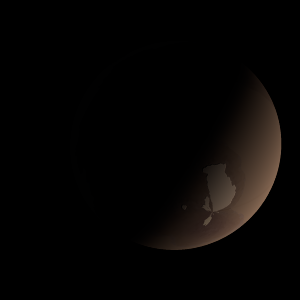|
|
Space Astro
|
Info for exoplanet "Mabgreip"
| Scientific (actual) data |
|---|
| Name | Kepler-1666 c |
| Planet status | Confirmed |
| Radius | 0.289 |
| Orbital period | 40.7157 |
| Semi major axis | 0.2383 |
| Inclination | 89.95 |
| Discovered | 2020 |
| Updated | 2021-02-05 |
| Tzero tr | 2454980 |
| Impact parameter | 0.2474 |
| Temperature (kelvin) | 578 |
| Publication | Announced on a website |
| Detection type | Primary Transit |
| Alternate names | 2MASS J19514837+4615529 c, K00945.02, KIC 9605514 c, KOI-945 c, KOI-945.02 |
| Star name | Kepler-1666 |
| Right ascension | 297.95° |
| Declination | 46.26° |
| Mag i | 14.908 |
| Mag j | 13.96 |
| Mag h | 13.682 |
| Mag k | 13.629 |
| Star distance | 1434.42 |
| Star metallicity | -0.2 |
| Star mass | 1.084 |
| Star radius | 1.21 |
| Star temperature | 5818.75 |
| Star alternate names | 9605514, 2MASS J19514837+4615529, KIC 9605514, KOI-945 |
| Wikipedia article | Kepler-1666 c |
Back
| |
| Fictional info (?) |
|---|
| Suggested name | Mabgreip |
| Planet type | Cold planet |
| As seen from Kepler-1666, in a frame of reference that rotates with the orbital motion, it appears to rotate only once every two years.
It has the densest atmosphere of the two cold planets, consisting primarily of xenon. The krypton has probably photodissociated, and the free xenon has been swept into interplanetary space by the solar wind because of the lack of a planetary magnetic field.
The outer atmosphere is visibly segregated into several bands at different latitudes, resulting in turbulence and storms along their interacting boundaries.
Its north and south poles, therefore, lie where most other planets have their equators. |
| Atmosphere | Xenon | 35% |
| Hydrogen peroxide | 33% |
| Krypton | 20% |
| Ammonium hydrosulfide (NH4SH) | 11% |
| Helium | 1% |
| Atmospheric pressure | 0.001 bar |
 |
| No known satellites |
| Google search for Mabgreip |
|
Website by Joachim Michaelis
|
|
|
|